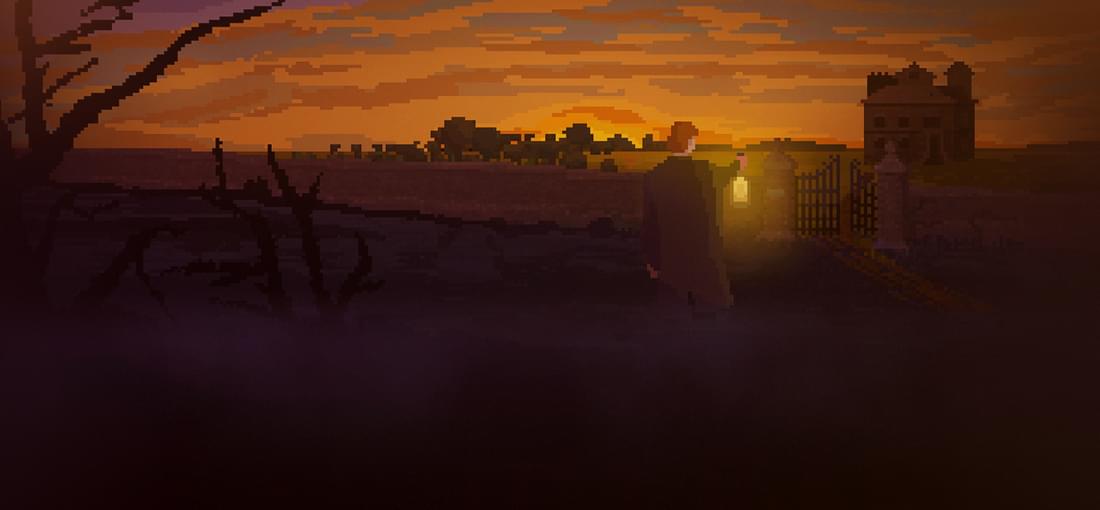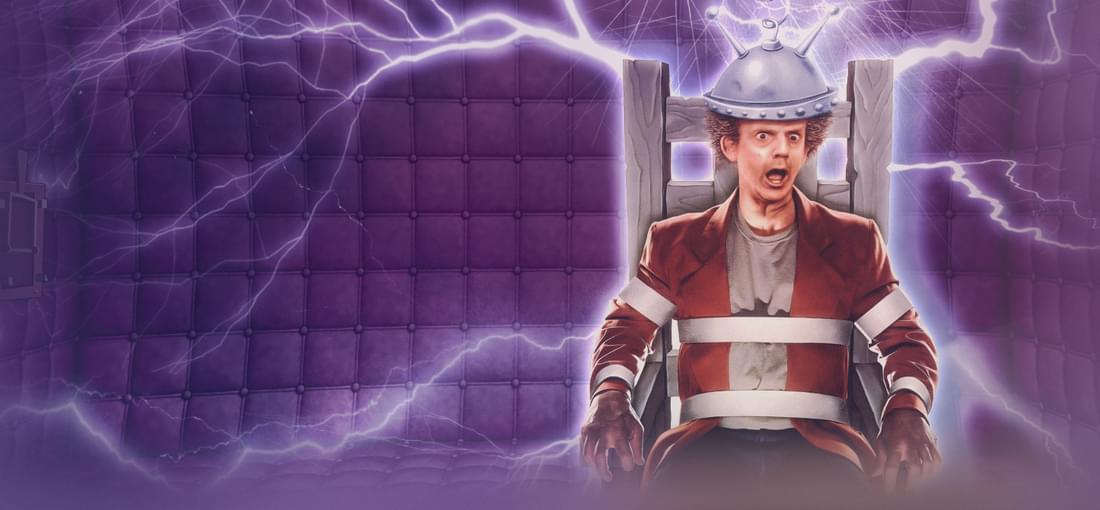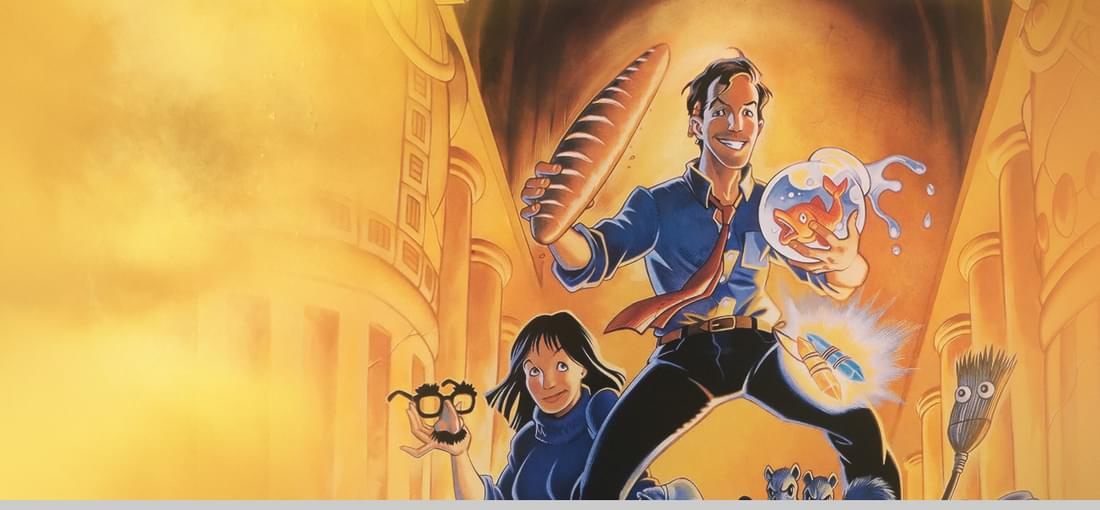


This game does some things extremely well. The understated music adds to an atmosphere that is both surreal and potentially terrifying. The graphics are understated as well, but in a good way--scenes are not over-described and evoke your imagination. Overall game play is smooth, and the interface is simple and easy to use. As a horror game, this title did not disappoint--it was one of those rare games that actually spooked me a bit and not just with jump scares like sudden sound effects or loud music. I would be hesitant, however, to call "The Last Door" an adventure game. The puzzles were extremely straight forward, and as long as you explore all spaces, you will have the obvious item/information needed to solve all of the puzzles. The game was very sequential and linear; it was always extremely obvious what needed to be done next (and how it should be done). Sometimes, just moving into a new area triggered the action needed to move the story forward, and this made the game feel unsatisfying. This was not so much a game you play as one you explore and watch--more like an interactive movie. It took a few hours to complete this game, and while those hours were enjoyably spent, I would be hesitant to repeat the experience for the full price of the game. My verdict: buy this game when it's heavily on sale and you will have a few hours of creepy and intriguing story-telling ahead of you. But don't expect to be challenged.

For me, this is close to a 5-star game--a real rarity. "Toonstruck" is definitely not what it seems. From the cover art and introductory sequence, I expected a child-friendly, silly-but-simple adventure game. Child-friendly this game is not, and thankfully so. "Toonstruck" uses cartoon logic, great voice acting, and that peculiar mix of FMV and drawing to pull you into a bizarre, perverse world imagined by an animator. The dialogue was funny, puny, and generally enjoyable ("does no one understand the needs of a buxom bovine with a penchant for masochism?!"). The art style was surprisingly fun, and so were the characters. With one exception. It's a matter of preference and not something that destroys the gameplay, but Flux overpowered the game at times, and I would have enjoyed this game significantly more with his absence. My only real complaint with this game is the flow of puzzles. The puzzles were generally challenging (in a good way) and required you to adopt cartoon logic to solve them. At some points, however, you need to find objects that are not easily identified by the cursor, turning certain areas into a pixel hunt. At other times, it's not clear that an object can be reused because it leaves your inventory and looks "embedded" in the areas in which you use it. These interruptions to otherwise fluent gameplay are not dire, however, but merely slow down progress a bit. Final verdict: "Toonstruck" offers a fair challenge, even for not hardcore adventure gamers. The bizarre dialogue and slapsticky sequences make this game a fun way to end the major era of adventure gaming.


As a long-time player of this franchise, there are things about "Save the World" that are super satisfying. Some of the jokes and characters of "Hit the Road" make cameos in this installment, and the absurdist, cartoon-noir humour definitely links the games together. The voice acting is great and so is the dialogue. "Lincoln Must Die" is genuinely hysterical, and it's in this part that the greater aspects of this series come together best. The first episode ("Culture Shock") could really derail the whole user experience, however. As other reviewers have mentioned, there is a bug at the very end of the episode that makes for extremely frustrating gameplay. This episode is also slower paced than the other parts--perhaps because it's in this episode that you learn the "logic" of the puzzles. The characters and settings are also less appealing than in the other episodes, in my opinion, which can make this episode feel tedious. While the episodes generally built well on each other, some aspects of the episode format did not work so well. The same environments and objects appear in multiple parts, and most are static (in the sense that they are never meaningfully interacterable or just add to goofy dialogue). In some parts, however, those objects that are always just in the background become part of the puzzles. You then have to go back over the objects you'd tested in earlier parts to detect what will suddenly add to game progress. This can definitely slow the game down. As a final verdict: "Sam and Max Save the World" is a silly, straight-forward adventure game that really shines in the warped humour department. It is generally fast to play through and is a great way to spend a few afternoons. If you check a walkthrough for the end of episode one, this is a thoroughly enjoyable game--definitely worth the play.

There are some things to love about this game: stellar music and sounds, an intriguing around-the-world adventure theme, and the opportunity to complete puzzles in multiple ways. These joys pale in comparison to three specific aspects of this game that make it nerve wracking and almost unplayable without heavy assistance of a walkthrough: 1) the money system, 2) the lack of context and guidance for puzzles, and 3) tedious, random puzzles. First, the money system. You have a budget in "Zak McKracken", which is fine (in principle). The problem is that the sequence in which you must travel to certain locations (and with certain items on hand) is not always clear, which means multiple trips to the same destination (at a hefty price for certain locations). You can run out of money, landing you at a dead end. Second, there is no "look" or "talk to" command, which often makes it difficult to capture the information you need to understand a puzzle and the order of completion. If you miss small details in conversations (e.g., the guru explaining what the blue crystal does), you have no way to ask for that information again. Finally, the third issue is the randomly-generated mazes in almost all locations. Is the only point to prolong play time? The mazes do not add to the user experiences and are, well, just tedious. This could have been a super game--what a great story idea! But as a final verdict, this is a game that requires rose-coloured nostalgia glasses to appreciate. I would not buy this game again, even on sale, as I don't feel like *I* actually played this game because I needed to rely so heavily on walkthroughs.
As other reviewers have noted, "The Dig" is by no means a terrible game. It has its charm--sympathetic voice acting, beautifully-drawn backgrounds, and a story full of potential. Sadly, "potential" is the key word for this game. The game felt patched together in some ways. The characters (with the exception of Commander Low) had inconsistent personalities; some of their actions seemed out of character and like they occurred just to move the story into the planned direction. When you started to appreciate the potential depth of the story, the characters would surprise you with totally inappropriate dialogue that reminded you that you were playing a game. The puzzles were... jesus, some were tedious and cryptic. They weren't even cryptic in a mysterious, engaging way--just, well, puzzling. I felt like I had missed essential context for interpreting some puzzles (like the service drone puzzle), and sometimes the cues indicating when you had completed something correctly were misplaced or unclear. Even after consulting a walkthrough to get through a few puzzles, I thought "how would I ever have arrived at this answer?". It felt like the game accidentally withheld information from the story that would have made the puzzles solvable (but still challenging). The dealbreaker of this game is definitely the ending, which is really unsatisfying and shallow. The verdict: You can pass on "The Dig" unless it comes your way for free or is a relic of nostalgia for you.
"Resonance" plays, in many ways, like a classic adventure title, but without the frustrating pixel-hunting and dead ends typical of so many older titles. This game was extremely engaging--from the beginning, the innovative mechanics (e.g., short/long-term memory system), great dialogue, and fitting atmosphere made the game easy to step into. As other reviewers have mentioned, it's difficult to address the game's good and bad points well without spoiling the plot. Without going too much into depth, what makes this game stand apart are the characters (they do have depth, more than one would expect for the length of the game), the fluent and well-executed narrative style, and the ambiance. The graphics were nostalgic but clear, the music was excellent for the settings (the hospital muzak cracks me up), and the backgrounds were beautiful. The not-so-good parts... well, honestly, there isn't that much to complain about with this game. I would agree with other reviews that the game is short, and it feels like some plot elements could have been better explored. The mechanics were generally great, but some of the more plot-heavy sections of the game could be tedious when you want to replay a section for an alternate pathway. My recommendation: play this game! You feel invested in it quickly, and it's one where there are rare moments where you're at a loss for what should come next. For a new title, it pleasantly surprised me and definitely makes me excited for other possible future titles from this maker.

Ok, I bought this game because you can turn your characters into Liches. How cool is that? Back to the review. The MM series have a unique way of increasing your skills, where you first need to learn it and then with skill points (which you get every level) you increase your skill levels. Once getting into certain skill levels you can go to a master to become Expert, Master or even Grand Master at this skill. Your class dictates what skills you can train to what level, so you are forced to have a balanced party. MM9 gives two class promotions per character, so it gives you something to work towards to. In comparison to other MM games, MM9 "streamlined" the skills, so there is 1 skill for all elements (which used to be 4) and like one armor skill instead of one for plate, leather and chain. It feels rushed this way. This game is a Mac and Cheese kind of RPG. By that I mean that it is a lot of fun, but it does not give any challenge or satisfaction at the end, which comes way too fast. On top of that there are a few nasty bugs. I never played it back in the day and if you've read the other reviews, you can tell there used to be WAY more. The GOG version is patched to the latest version and only crashed three times for me. There was one bug that almost forced me to have to start the whole game over. Luckily by cheating (I used a save game editor) I could correct the bug. To save you the trouble there is a way to circumvent it. When you want to promote your character you have to solve a quest, but if you didn't tell the person who can promote you what characters should be promoted before solving the quest, noone can get that promotion anymore! So if you want a promotion, talk with the correct character and already select who needs to be promoted and then solve the quest. Any other order will cause you to want to pull your hair out! I do not think it is worth the price, it should be like $5 instead of $10, but if you just want a quick RPG game this is the game for you.

First of all I've a fan of the original Quest for Glory series since I played part 1 back in 1991. If you are a fan too, there are some things you need to know about this game. The good part is that the game looks great, the dialog is pretty good, you will love the narrator and the main character, and the voice acting is not bad. The puzzles are not too hard and not too easy. I played through it in a week and only one time I asked someone to look something up. Here is where the trouble starts. The game is quite buggy and unclear when it comes to navigation. Sometimes one side of the screen is wide open and you can't go through that side and other times there is a very slim opening which does go somewhere. At some point I had to find something in the forest and couldn't find it. I looked seriously EVERYWHERE. After someone looked it up for me, we came to the conclusion that you can take a turn somewhere which opens a whole new area! Another navigation problem I've encountered is that sometimes you try to walk somewhere or into something and it will not register. You have to click several times and in slightly different places to make it work. Another thing that really bothered me is that for a few puzzles you get the literal answer making the puzzle totally pointless! Like this logic puzzle, which was easy to solve. But there is one person who gives you the step-by-step solution! Why?! The last complaint I have is that the game feels rushed. The first screens have a lot of clickable items and the later screens only have like three "look" dialogs. Also the many clipping bugs (backgrounds over foregrounds) make the game feel less immersive than it could have been. All and all it is worth a playthrough but the €18,49 ($20) was really too steep. $5 would have been better. I also hope that Infamous Quests will continue making games. If you are not sure if you'd like it look at the site of Infamous Adventures (how it was formerly called) and try an early game of theirs.

"Gabriel Knight II" was by no means a terrible game, but it's not a stellar one either. The game was extremely linear and predictable. With the exception of a few occasions where the puzzles were convoluted and far-fetched (i.e., the tape cassettes), this game was quick to play and fully anticipatable (for a "whodunnit" story, this one kills all mystery). The eggregious over-acting was also distracting. I know this is part and parcel of FMV, but the characters did not feel like they carried over from part I at all. Despite this, the game was surprisingly nice to play, and the music was excellent and the environments were cool (even if they were a tourism plug for Baveria ;).

"Phantasmagoria" takes an interesting story and turns it into something redundant and uninteresting because of poor game mechanics. The game itself can be played through in a relatively short time... assuming, that is, that the game does not auto-save over a save that you create before a major event. At the end of the 6th chapter, I created a save to ensure that if there was a problem going into the final chapter, I could go back--but suddenly, despite there being no auto-save function earlier in the game, the game replaced the save file at a point in which the game could no longer be finished. I had to start the previous chapter again to collect all necessary items. Sadly, this was the most time-consuming part of an otherwise linear and relatively straight-forward sequence of events. As other reviews note, this game can stump you at times because of minute details on useable items (i.e., an object that you have held for a while and has an interactive element that the cursor does not always notice). The game can also be difficult to navigate because of unclear environments (that is, it's not always obvious where you can go). A final frustrating element was that there were so many items you could interact with that did not actually do anything for the game--you can sit on several couches and chairs to absolutely no purpose. These mechanics made the game feel long, but the actual game play (and not frustrated fumblings with interface) was short.